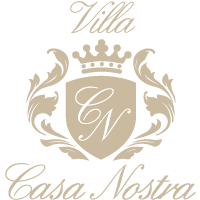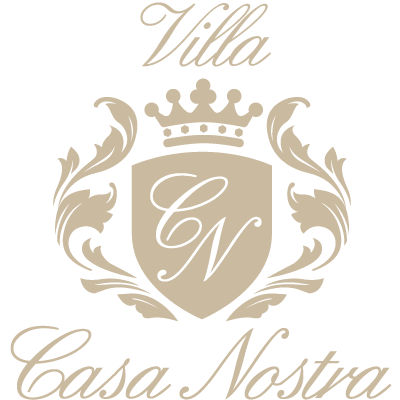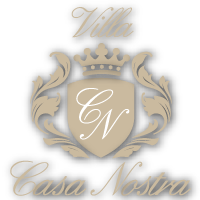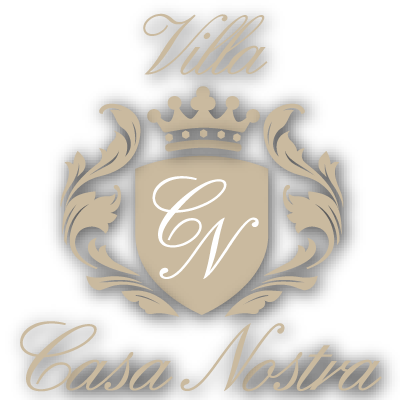Interesting places and distances
Macerata: 28 km
Tolentino: 19 km
Fermo: 42 km
Fiastra Abbey Natural Reserve: 18 km
Highway (A14 highway connection to Tolentino-Civitanova Marche): 46 km
San Ginesio Bus Station: 3 km
Falconara airport: 79 km
Macerata railway station: 28 km
An all-inclusive pack for your trip
San Ginesio
San Ginesio was one of the most important municipalities of the March (bordering lands) of Ancona (XIII-XIV century) until its entrance as part of the Papal States. The town has preserved almost entirely its medieval structure and walls.
The defensive walls were made of bricks and stones between the XIV and XV centuries and are of great beauty. San Ginesio enjoys most modern sports facilities, especially the tennis courts, where the town hosts big events. The antique medieval village has been awarded the “One of the Most Beautiful Villages of Italy” certification; in 2002 San Ginesio was certified as a Bandiera Arancione town; and it is part of Comune Amico (Friendly Municipality) of Itinerant Tourism.
Da non perdere
The Collegiate Church with its dominating position upon Piazza Gentili, the main square of the historical centre of San Ginesio, has a unique façade. The lower part dates back to its primitive Romanesque construction while the upper part, built in 1421, was decorated as fine lace decoration, it is a unique example of Flourished Gothic in Marche
San Ginesio is called the balcony of the Sibylline.
From the highest points of the old town, and in particular from the public gardens of Colle (hill) Ascarano, visitors can appreciate a vast panoramic view stretching from the Sibylline Mounts to the Conero Mount.
Parks and Nature
The Natural Reserve of Fiastra Abbey originated as such, in 1984,it aims at protecting the natural surroundings of the Abbey of Chiaravalle di Fiastra, and Cistercian monastery nestled amid these green sceneries founded in 1142. This complex, which is entirely open to the public, has been object of studies on the medieval history of monasticism. This is possible for the way the monastery has been preserved and the monks who live there.
The complex has about 1800 hectares, the countryside has been preserved almost intact and it still shows the traces of the monks’ work in the past: large cultivated areas and many farmhouses. Some of these farmhouses are still inhabited by farmers who work the land respecting the old local traditions of land treatment and work. Particularly interesting is the Selva, an ancient forest of about 100 hectares, the remaining sceneries of a much bigger forest. The Selva is home to one of the symbols of the Natural Reserve of the Fiastra Abbey: the roe deer. Other evocative environments are the Fiastra River and the Le Vene Lake. There are different routes around the reserve, all of them are very accessible.
Distance from Casa Nostra: 15 minutes away
The National Park of the Sibylline Mounts, was opened in 1993. It includes not only the Sibylline Mounts, among which, the highest peak is Mount Vettore with its 2476 meters; but also, all the natural areas surrounding these mountains reaching the provinces of Macerata, Ascoli Piceno, Fermo and Umbria. This protected area is home to 1,800 flora species, 50 mammals species and 150 birds.
And it houses historical towns, fortresses, castles, abbeys and churches. These are lands of mysterious places –such the case of the Pilate Lake; and lands of ancient legends about prophetesses, the sibyls, after whom the mounts were named. The Park preserves its natural and cultural history by providing the necessary development policies for its adequate sustainability.
Distance from Casa Nostra: 30 minutes away
Itineraries to Abbeys
Abbazia delle Macchie (San Ginesio)
The date of foundation of this abbey is unknown. What we know is that by the XIII century it was dwelled by its abbots and a rich land patrimony which was managed with the intervention of the authorities of San Ginesio. The architecture of the abbey was changed as a result of a remodelling in 1658. One of the changes was on its façade; it was raised with the addition of a curved tympanum. Some traits of Romanesque architecture are still visible in the abbey, such as the decorations of the main entrance door, and the vestiges of rose window which was later filled.
Abbazia di Chiaravalle di Fiastra (Tolentino-Urbisaglia)
The Chiaravalle di Fiastra Abbey and its surrounding areas constitute perfect synthesis of architecture and nature. It was founded in 1142 by a group of Cistercian monks who came from the Abbey of Chiaravalle in Milan. The construction is a great example of Cistercian Romanesque art; it is majestic and basic at the same time, almost completely devoid of frescoes and decorations, in accordance with what the Cistercian spirit was.
Itineraries to Fortresses and Castles
Camerino
The ROCCA (fortress) DA VARANO of Camerino. According to some existent documents, the abbey had already been built by the XIII century. It was built on a pointed cliff of oblique stratifications; thus, the Rocca was enabled with a dominant position upon the valley below. The abbey was partially refurbished in the XIV century by Giovanni da Varano. Within the remains of the fortress, a high tower stands out. It has been restored and is used as a venue for exhibitions on local art crafts.
Urbisaglia
The ROCCA (fortress) OF URBISAGLIA. The City of Tolentino controlled Urbisaglia -with a few interruptions- from 1296 to 1566, and between the late XV century and the beginning of XVI century the controlling authorities from Tolentino had the Rocca built in Urbisaglia. The fortress has a trapezoidal shape with four towers at the corners; its south-western flank is longer than its north-eastern side. During its construction, some Roman ruins, as well as the base of a fortified tower of the year 1200 were incorporated to the construction of the fortress. Embrasures, loopholes and merlons are part of the architecture of the Rocca of Urbisaglia.
Castelraimondo
The CASTELLO (castle) DI LANCIANO is located in a large impressive park. The construction of the castle was commissioned by Giovanni Da Varano in 1382 to protect the north eastern border of Camerino. In 1489 it was transformed into a noble residence by Giovanna Malatesta, Giulio Cesare Da Varano’s wife. Later the property passed down to several noble families, and finally in 1754 it was bought by the Bandini family. The Marquis Alessandro Bandini refurbished and restored the property entirely, enriching it with furniture, paintings and family objects. The corridors of the first floor and the celebration hall are of great artistic interest for its precious decorations.
Caldarola
The PALLOTA CASTLE is located above the town of Caldarola, it holds a dominant position upon the town. The castle is mentioned as a military defensive construction in existent documents that go back to the ninth century. This military facility went through several dynastic vicissitudes; then, in 1270 it was partially destroyed because of a battle between Camerino and San Severino; and after a short domain on the part of San Severino, Camerino became ruled by the Da Varano Dukes. In 1450 the Pope entrusted the castle to the Pallotta dukes. In 1590 it was transformed into a noble property by Cardinal Evangelista Pallotta. The castle hosted many personalities, including popes and queens. Many rooms still maintain their original furnishings. Here, it is also possible to visit the exhibit of a collection of antique weapons ranging from the XV c. to the XVIII c., and some carriages with their own harnesses of the XIV c. and XVI c.
Tolentino
DELLA RANCIA CASTLE used to be part of a monastic grange (grancia- from grain) of the Cistercian monks of the Abbey of Chiaravalle di Fiastra. By 1354, the Da Varanos from Carmerino had become the owners of the property and they started the transformation of the ancient farm complex into a military fortress. The castle has a square shape and has a dominant tower on its north-western corner. The defensive walls show their battlement parapets with merlons, surface water drains and embrasures. Over the centuries the grounds around the castle were the stage of several battles, probably the most famous of them is the one which occurred in 1815 between the troops of Joachim Murat and the Austrian army.
All of these castles are approximately 20 minutes away from Casa Nostra.
Events
The province of Macerata offers a wide range of entertainment and attraction options; the cultural offer includes opera, theatre performances, historical re-enactments and typical traditional local dishes.
The many small theatres of the medieval villages nestled on the hills, the majestic Sferisterio, the squares and streets of the historic centres are the ideal settings for unforgettable moments.
Find more about all these events in real time by clicking here.





 Italiano
Italiano